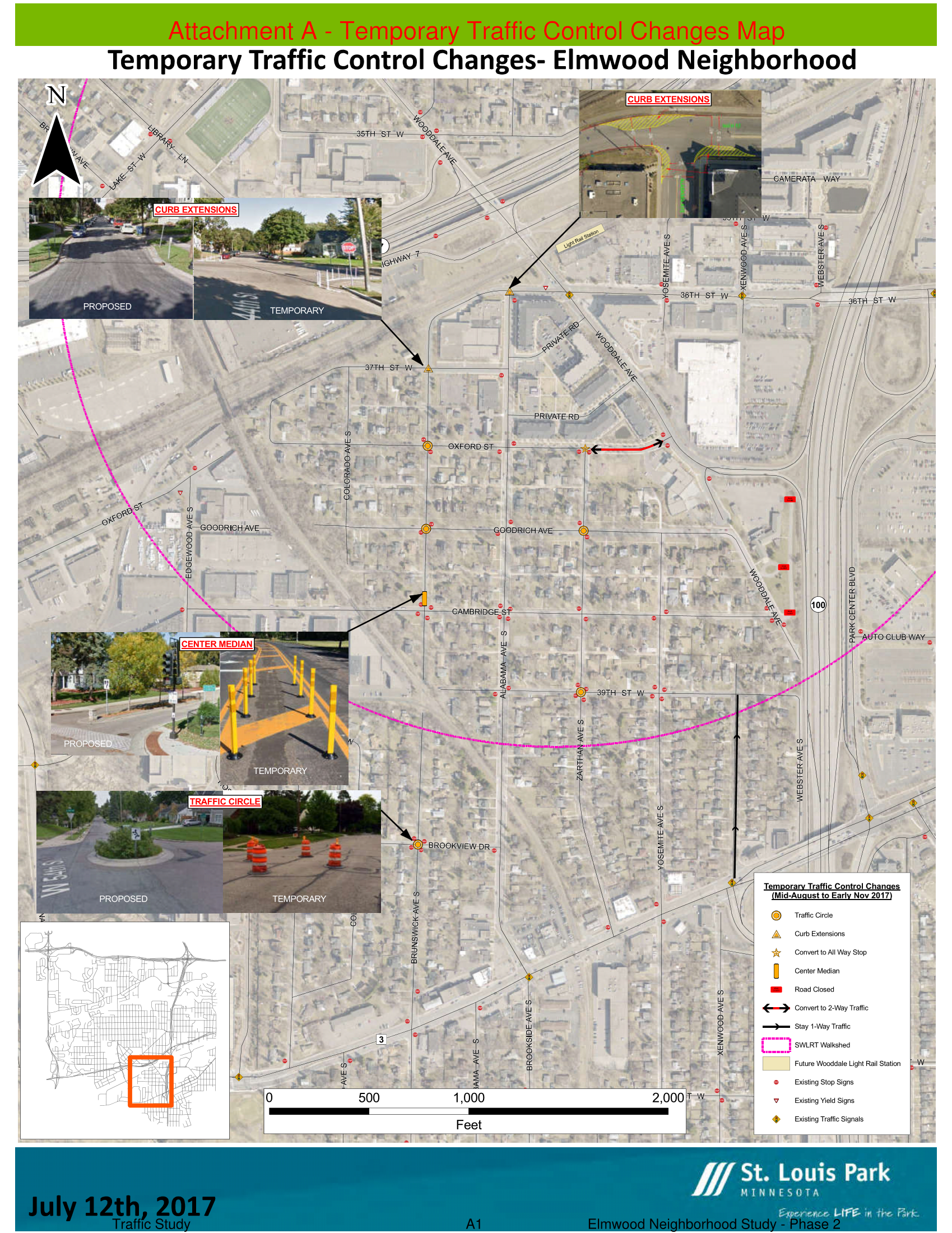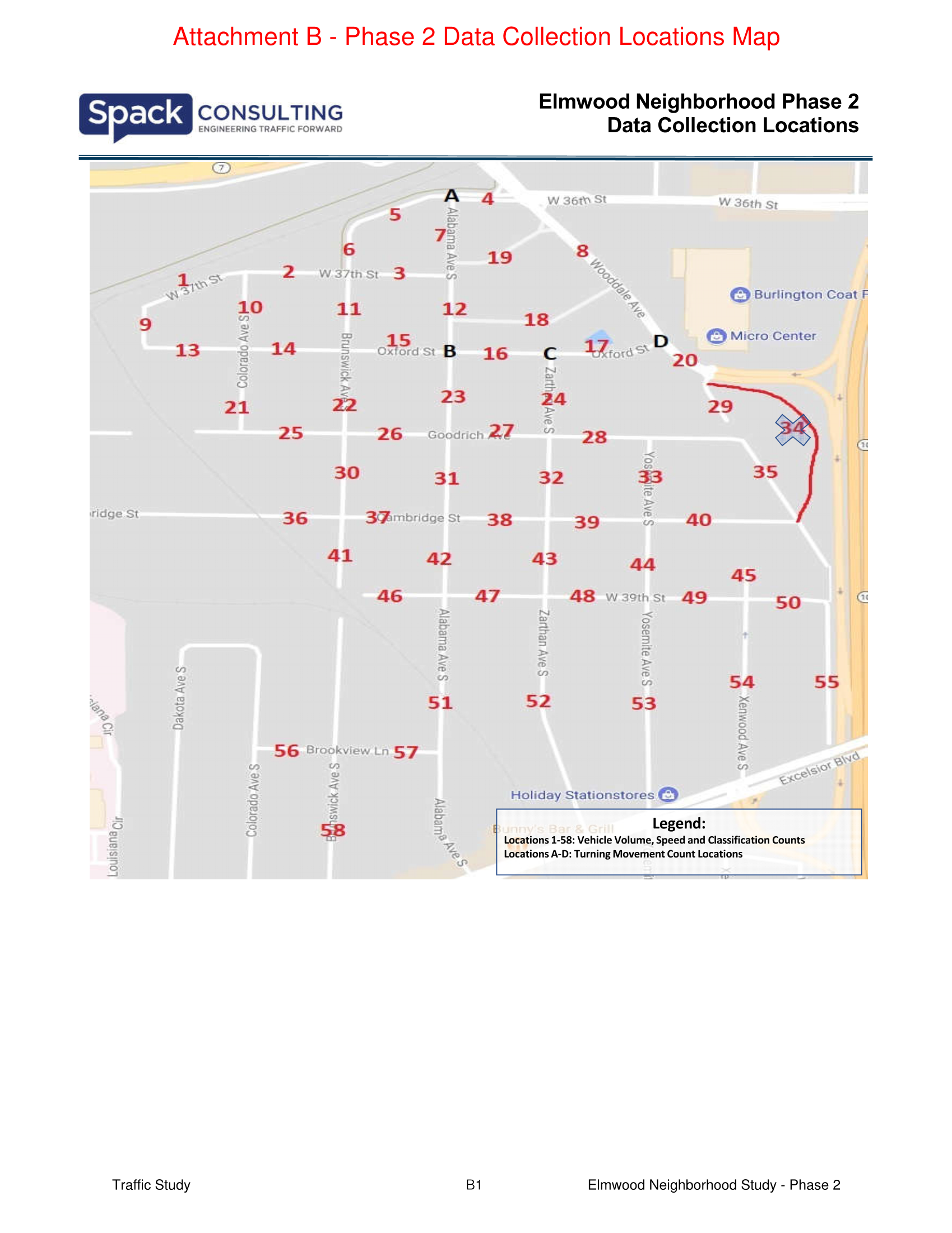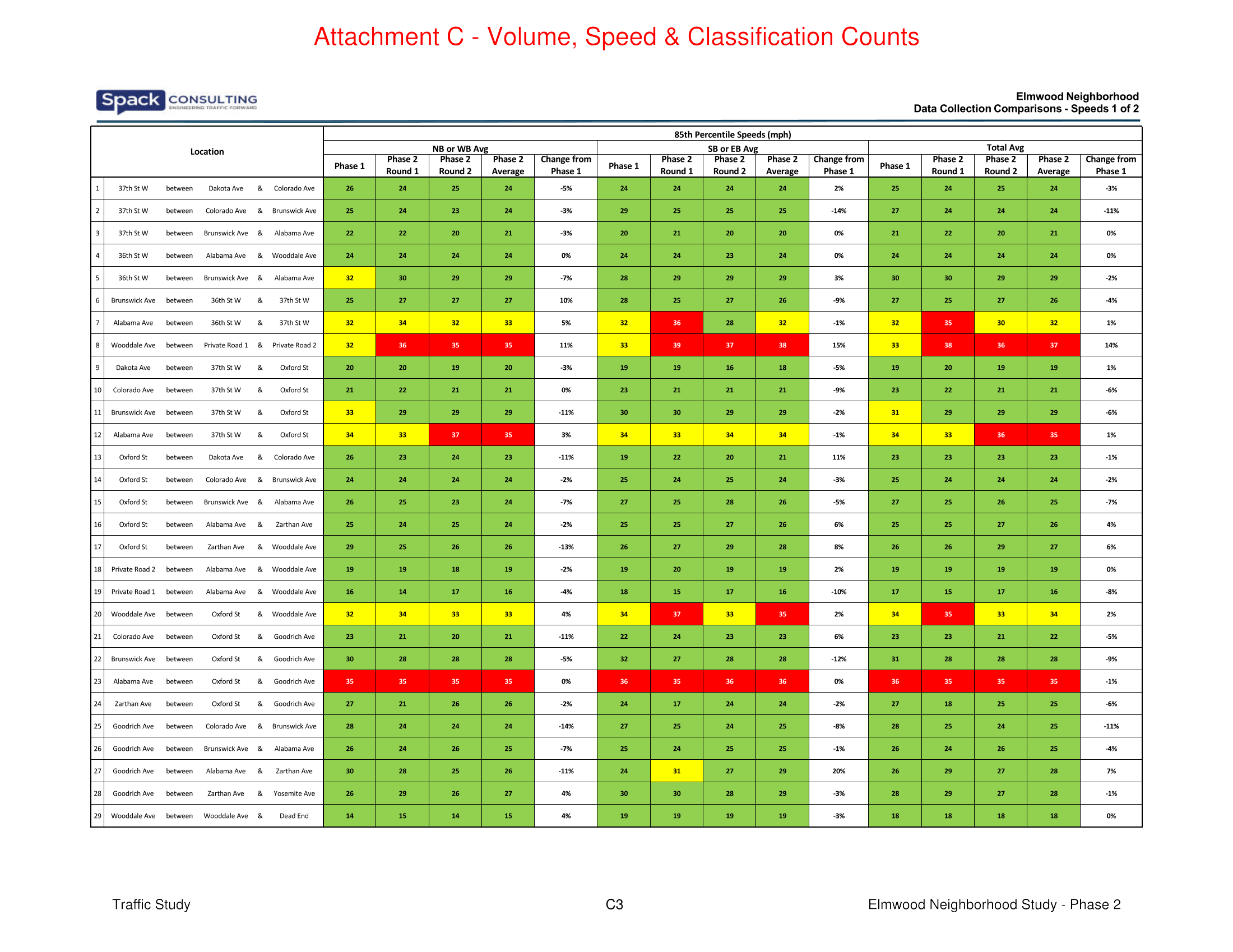The City of St. Louis Park, Minnesota had a neighborhood reconstruction project planned for 2018 with significant resident concerns about traffic issues. The situation is not unique, but the engineering staff’s approach to the project was.
They developed a very detailed public engagement process two years in advance of the reconstruction, which included bringing us in to run a temporary experiment to study changes in ingress/egress as well as traffic calming.
Our goals were to keep 85th percentile speeds below the statutory 30 mph, keep truck traffic on collector streets, and keep daily volumes below 1,000 vehicles per day on the local streets – all while diverting traffic from a cut through route on private property.
Lessons Learned:
- The public engagement process and temporary experiment allowed the city council to quickly and confidently approve a controversial project.
- The public engagement charette identified several areas of concern that we did not anticipate. This allowed us to study the issues and determine if they were real or imagined problems, and ultimately, to design solutions.
- Implementing the changes with barrels dissipated the “fear of change” the residents had.
- Implementing the changes with barrels and collecting before/after data allowed us to recommend a solid plan. The calming measures had a positive impact at about 75% of the locations, which were then implemented in the construction plans. We were able to avoid permanently implementing ineffective measures at the other locations.
- Having a third party facilitator at public meetings to enforce civility is fantastic.
Here’s a typical traffic calming process:
- Collect data – volumes, speeds, etc.
- Observe existing conditions.
- Consider and evaluate options.
- Engage the community regarding the options.
- Recommend improvements.
- Follow-up to determine the impacts.
Here’s the process we followed to achieve the city’s goals:
- Collect data – volumes and speeds on every block face within the neighborhood (50+) as well as turning movement counts at key intersections.
- Analyze crash data at every intersection.
- Observe existing conditions.
- Engage the community about their concerns at a charette-style.
- Model potential impacts of opening a cul-de-sac, closing off a shortcut access through private property, converting one-way to two-way streets and implementing traffic calming (bumpouts/curb extensions, traffic circles, diverters, pedestrian refuge islands, etc.).
- Determine a plan for changing ingress/egress and adding traffic calming.
- Explain the plan at a neighborhood open house.
- Implement the changes with temporary signs, barrels and pylons.
- Collect all of the volume and speed data again a couple of weeks after implementation to make sure we didn’t make a catastrophic change.
- Collect all of the volume and speed data three months after implementation to determine what worked and what didn’t.
- Analyze the data to make recommendations for permanent changes to be implemented with the neighborhood reconstruction project.
- Meet with the city council for approval of the recommended plan.
- Present the recommended plan at a neighborhood open house.
- Build the recommendations with the pavement/curb/sewer reconstruction project.
Finally, here are some of the graphics that were developed as part of the project:
The post Case Study: Data Centered Traffic Calming Experiment in a Neighborhood appeared first on Mike on Traffic.




